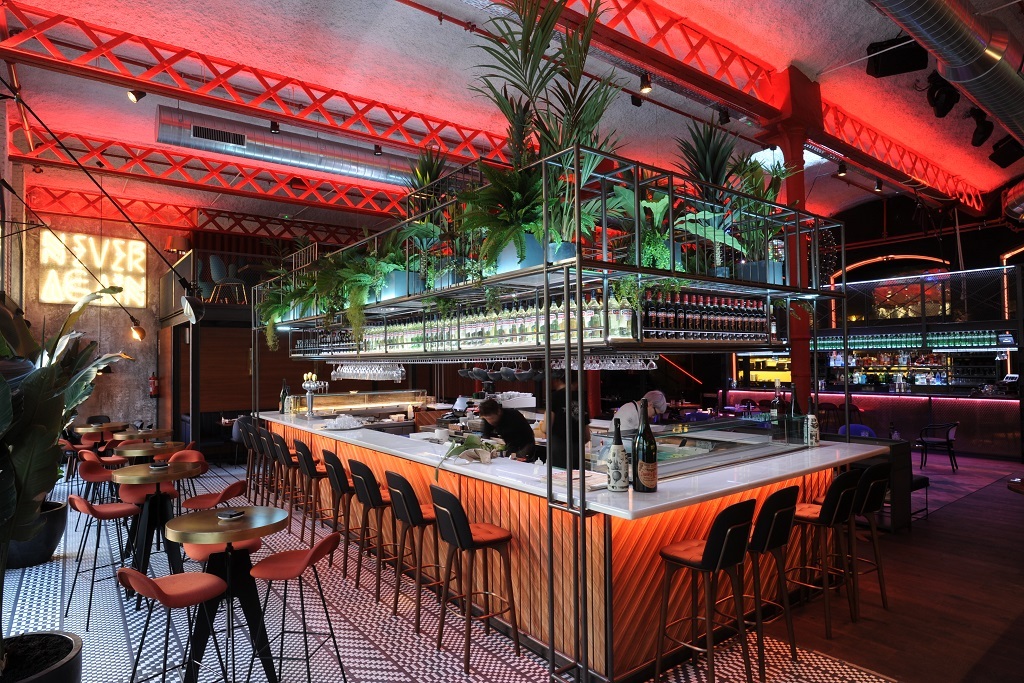Are you a restaurant owner wanting to learn how to calculate your restaurant's table turnover rate? You are about to discover practical strategies to optimise your table turnover for increased efficiency and revenue.
What is table turnover rate?
First things first, what is table turnover rate? Table turnover rate refers to the frequency at which a table is occupied and vacated in a specific period of time, typically measured over a night or during meal service hours. 
This is a crucial metric for restaurant management, as it reflects the efficiency of service and customer flow. A high table turnover rate suggests that more guests are being served and, as a result, more revenue is being generated. Conversely, a low table turnover rate may indicate service inefficiencies or longer dining times, limiting the number of diners that can be accommodated.
By monitoring and optimising table turnover rate, restaurant owners can enhance operational efficiency, improve overall customer satisfaction, and drive higher profitability.
How to calculate table turnover rate
Before calculating the table turnover rate, have you ever wondered how to calculate restaurant seating capacity? Understanding your seating capacity is crucial for optimising guest flow and enhancing your restaurant's overall efficiency. Keep in mind that our solution, TheFork Manager, can help you optimise your restaurant floor plan and table turnover rate.
Additionally, calculating your average table turnover rate is a straightforward process. Here's a step-by-step guide:
- Choose a time period: Select the specific period you want to measure. This could be a lunch service, dinner service, a specific day, or even a whole week.
- Count the number of parties served: Determine the total number of parties (groups of diners) that were seated and served during the chosen time period.
- Count the number of available tables: Determine the number of tables that were available for seating during that same period. (Don't include tables that were out of service or reserved for other purposes).
- Apply the formula: Divide the number of parties served by the number of available tables.

Formula:
Table Turnover Rate = Number of Parties Served / Number of Available Tables
Example:
If you served 45 parties during a dinner service and had 15 tables available, your table turnover rate would be:
45 parties / 15 tables = 3
This means that, on average, each table was turned over three times during that dinner service. You can do the same to calculate the table turnover of a single day, or a single lunch.
What Is a Good Table Turnover Rate? It depends on the type of establishment. Anyway, an average is around 3.
Factors affecting table turnover rate
A restaurant’s table turnover rate is influenced by several key factors. Understanding these factors is crucial for developing effective optimisation strategies:
- Type of service: Fast food and fast-casual restaurants naturally have higher turnover rates than fine-dining establishments, where guests expect a longer, more leisurely experience.
- Customer dining times: The amount of time guests spend at their table directly impacts turnover.
- Staff efficiency: Well-trained and efficient staff can significantly speed up service, from taking orders to processing payments.
- Reservation management: Effective reservation management, including strategic table allocation and booking intervals, is key to maximising table occupancy.
- Menu Design: The complexity of the menu can directly impact order and preparation times.
How to optimise table turnover in your restaurant
Optimising table turnover is about finding the right balance between efficiency and customer experience. You want to serve more guests, but you never want to rush or pressure diners. Here are some proven strategies:
- Streamline your reservation process: Using a tool like TheFork Manager allows restaurants to seamlessly manage reservations, providing valuable insights into peak times. You can also use it to optimise table assignments and minimise wait times.
- Optimise your table management: TheFork Manager also allows you to track table status in real-time, so you can quickly identify available tables and seat guests promptly.
- Use technology to speed up ordering and payment: Consider mobile POS systems for taking orders at the table and contactless payment options to expedite the checkout process.
- Train your staff: Efficient and well-prepared staff is essential. Train your servers to be attentive, anticipate guest needs, and manage their time effectively. Encourage teamwork, so servers can assist each other and avoid delays.
- Optimise your dining room layout: Ensure your restaurant layout is functional and efficient, with clear pathways for servers and easy access to tables. Consider different seating options (e.g., bar seating) for flexibility.
- Simplify your menu: A shorter, well-designed menu can help guests make decisions faster, reduce kitchen preparation time and limit food waste.
- Manage lingering guests politely: If guests have finished their meals but are lingering during peak hours, offer them a seat at the bar (if available) or politely check if they need anything else.
- Consider Revenue Management: Using tools like TheFork's revenue management resources can help you maximise the profitability of each table turn, finding the best balance between the number of turns and revenue per turn.

By implementing these strategies and consistently monitoring your table turnover rate, you can significantly improve your restaurant's efficiency, increase revenue, and enhance the overall dining experience for your guests.











